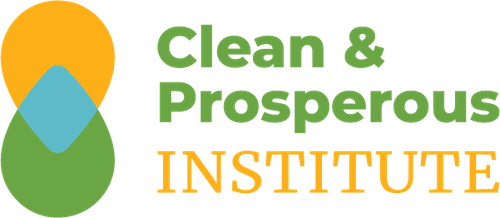Clean & Prosperous Washington
GHG Modeling
Press Release: GROUNDBREAKING REPORT RELEASED ON DECARBONIZING WA’S TRANSPORTATION SYSTEMS
(SEATTLE, WA) February 8, 2022– Standing in front of a new all-electric forty-five foot motorcoach and only the 2nd Kenworth all-electric class 8 tractor truck off the Renton manufacturing line, Clean & Prosperous Washington (CaPWA) released its first in-depth...
Analysis of 100% Clean Bill (SB 5116) Cost Cap
This updated Clean & Prosperous Institute (CaPI) analysis examines the rate impacts of eliminating coal power, achieving an 80% clean energy standard by the year 2030, and a 100% clean energy standard by the year 2045. CaPI relies on a variety of sources, and deploys its own utility-specific model.
The prospects for I-1631 eliminating 20 million tons of carbon pollution annually by 2035
This analysis aims to answer the following central question: What cost-performance must I-1631 investments in carbon reduction achieve in order to meet the state’s 2035 emissions target and trigger a freeze in the rate of fee increase?
Appendix A: Initiative 1631 Funding to Offset Increases In Lower Income Energy Burdens
To project the potential for revenue to be used for relieving the energy burden of people with lower incomes CaPI examined data on median household income by county (American Community Survey (ACS), 2016) and the share by county of income to poverty levels (also from the ACS, 2016). By this method, 39.7% of the populations would be covered by either the federal poverty line or the area median income designation. Including 40.8% in rural counties and 39.4% in urban counties.
Appendix B: Initiative 1631 Detailed Scenario Results
In this Appendix, we present detailed projections for the two available funds scenarios, each with four investment pathway cases that were the focus of this study.
Wasted energy: Increasing efficiency can reverse a major drag on Washington’s prosperity
Clean & Prosperous Institute (CaPI) analysis indicates that Washingtonians spent over $24 billion on energy in 2015 – down from nearly $28 billion in 2014 – with nearly 60% ($13 billion) spent on wasted energy. Efficiency gains are an opportunity to generate immediate economic benefit and foster a clean technology boom.
Wasted energy: Ten opportunities to reduce a $13 billion annual bill
Clean technology can boost energy efficiency, reduce waste, and save Washington State billions of dollars annually, while developing a competitive advantage in a multi-trillion dollar industry. Here’s a sample of some significant strategies to make this happen.
Appendix: Wasted Energy additional details
Section 1: Updating the Sankey diagram
Sankey Diagrams, like those produced by LLNL, are an information-rich visual depiction of energy or other (e.g. carbon, money) flows from inputs to final use.
Section 2: Carbon content of wasted energy
CaPI analysis estimates around 50 million metric tons of carbon dioxide (MtCO2) associated with wasted energy in 2015.
Revenue & Emissions Preliminary Impact Analysis – Senate Bill 6203
Using a proprietary modeling system, the Washington Business Alliance analyzed the expected outcomes of Senator Palumbo’s Carbon Tax Bill, Senate Bill 5930. SB 5930 is projected to generate a peak of roughly $1.8 billion/year in 2024 (in USD, 2018), and reduce greenhouse gas emissions by a similar amount as the Clean Air Rule (CAR): around 180 million metric tons of carbon dioxide equivalents (MtCO2e) give or take around twenty percent. Emissions in 2035 are projected to be around 9% lower than 1990 levels.
